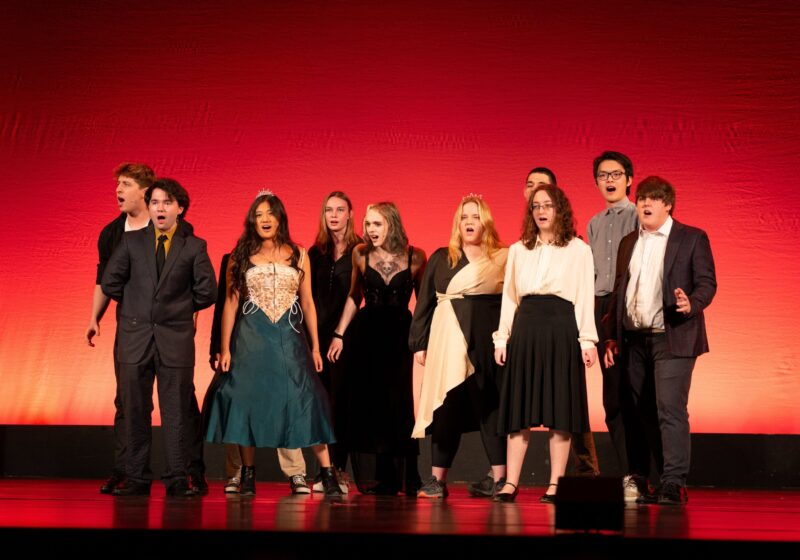Between the opportunity to improve sustainability, enhance connections between the River Campus and the Eastman School of Music, increase student awareness of the Students’ Association and improve transportation, there was plenty for the SA to accomplish this semester.
While SA leadership claims that a good deal of progress has been made toward the completion of some of these goals, they also recognize that other initiatives are in need of significantly more work in the spring.
From platform to practice
In his campaign platform, one of SA President and senior Eric Weissmann’s major aims was to increase communication between students and the SA. According to Weissmann, this was perhaps the most successful project he was involved in over the semester. Weissmann attributes much of this progress to Rocky’s Report, a weekly e-mail sent out to inform students about what the SA is working on.
‘I would say Rocky’s Report is the most significant contribution of this administration to the way student government communicates with its constituents,” Weissmann said. He added that because Rocky’s Report regularly connects to the SA Web site, it also facilitates increased student feedback.
Another of Weissmann’s initiatives from his platform is the ‘Experiencing Eastman” program, which was created to bridge the gap between the River Campus and the Eastman School of Music, allowing students from both campuses to take advantage of what the other has to offer. This program, however, has so far proved less successful than anticipated.
According to Weissmann, $2,000 has been made available to student organizations to assist them in running programs involving Eastman students. The SA has yet to receive any applications for use of these funds.
According to ‘Experiencing Eastman” Coordinator Ben Pollack, the SA has reached out to several groups about scheduling events that take advantage of these funds.
‘It is important to remember that opening the lines of communication and getting all the parties involved in this program was half of the process,” Pollack said. ‘Now that it’s up and running, it is our hope that student groups take advantage of this new resource.”
Take Five Scholar and Eastman Students’ Association President Ashlee Bickley has noticed an increase in River Campus students at the Eastman school but not really as a result of the program.
‘I think that both campuses were hoping for more interest, but I think that it will be a slow process getting people to want to go to each other’s campus,” Bickley said.
Bickley pointed to a program that would involve River Campus groups co-sponsoring a concert with the Eastman students for the Shropshire Foundation next semester, which she hoped would help encourage a larger partnership.
Sophomore Trey Socash, who is the co-coordinator of the Fill Fauver/Pack the Palestra programs, stressed that improvements need to be made in this area next semester as well.
‘There are definitely times when we wished we had more people there,” Socash said.
He explained that a probable cause of this low attendance is that many Fill Fauver events are currently held on weekdays, when students are less available to attend them.
Socash added that one of his major goals for the spring is to schedule most, if not all, of the Fill Fauver events on a Friday, Saturday or Sunday. Some improvements were made to Fill Fauver this semester as well. For example, various co-sponsors now host the event with the SA, and the sports included in the Fill Fauver program have been expanded to include baseball, softball and track.
Progress of Projects and Services
The Projects and Services Committee, which oversees the quality of student services and residential life, was also very active this semester, dealing with topics from transportation to dining.
One of the key issues was the need to develop a new discount taxi plan. According to Alissa Brill, co-chair of the committee, the current taxi program is costing the University nearly $100,000 a year because of the discounted prices students receive &- money that is being drained from other parts of the University, including research funding.
Brill added that this is the first major step on the taxi plan front in three years, and that the University expects a deal with a new taxi company to be finalized by spring break of next semester. According to Brill, the new taxis should be more reliable and of a higher quality, but at a slight rate increase for students.
‘When this is done, if it’s done right, it will be very successful,” Brill said.
Another program started by the Projects and Services Committee this semester is Dinner at The Mel. Once a month, the Meliora restaurant, which is normally only open for lunch, is now opened up for a themed dinner.
According to SA Senator and sophomore Bradley Halpern*, the other co-chair of the Projects and Services Committee, the SA is looking to expand this program so that The Mel hosts up to one dinner a week, if the program is turning a profit.
The committee also worked to improve the bike storage system this semester, as well as started talks to improve the bus routes, especially the Red Line.
Performance of Policy and Review
The Policy and Review Committee is yet another branch of the Students’ Association government, charged with overseeing the development of student groups. Last year, SA Senator and junior Dennis Nave, then chair of the Policy and Review Committee, met with the leaders of all of the student groups on campus to discuss concerns about the growing number of SA recognized and funded organizations on Campus.
According to the current chair, sophomore senator Kristian Brooks, the Committee received a lot of in depth information on how current student groups are acting on those meetings. Over the summer, Brooks and the Policy and Review Committee decided to create the Mid-Year Report, which all SA recognized groups will have to fill out. With the information Brooks receives early next semester, she hopes that the Policy and Review committee will be able to plot a clearer route to help student organizations.
‘We really want them to know that we’re a resource to them,” Brooks said. ‘Last year, groups really didn’t know that we were here to help them. We’re not here to punish. We want groups to succeed.”
Umbrella networks have been developed that would oversee similar student-run groups. Brooks mentioned two current networks that oversee student groups the Club Sports network and the Community Service Network.
According to Brooks, the Policy and Review Committee recently wrote a network constitution as a template for future networks, and the Community Service Network applied that template this semester.
The entire Students’ Association is also working to improve both their own sustainability and the sustainability of the University as a whole. across campus.
Fleming is a member of the class of 2013.
Additional reporting by Erin Philbrick.
*Bradley Halpern is a CT Senior Staff Photographer.






